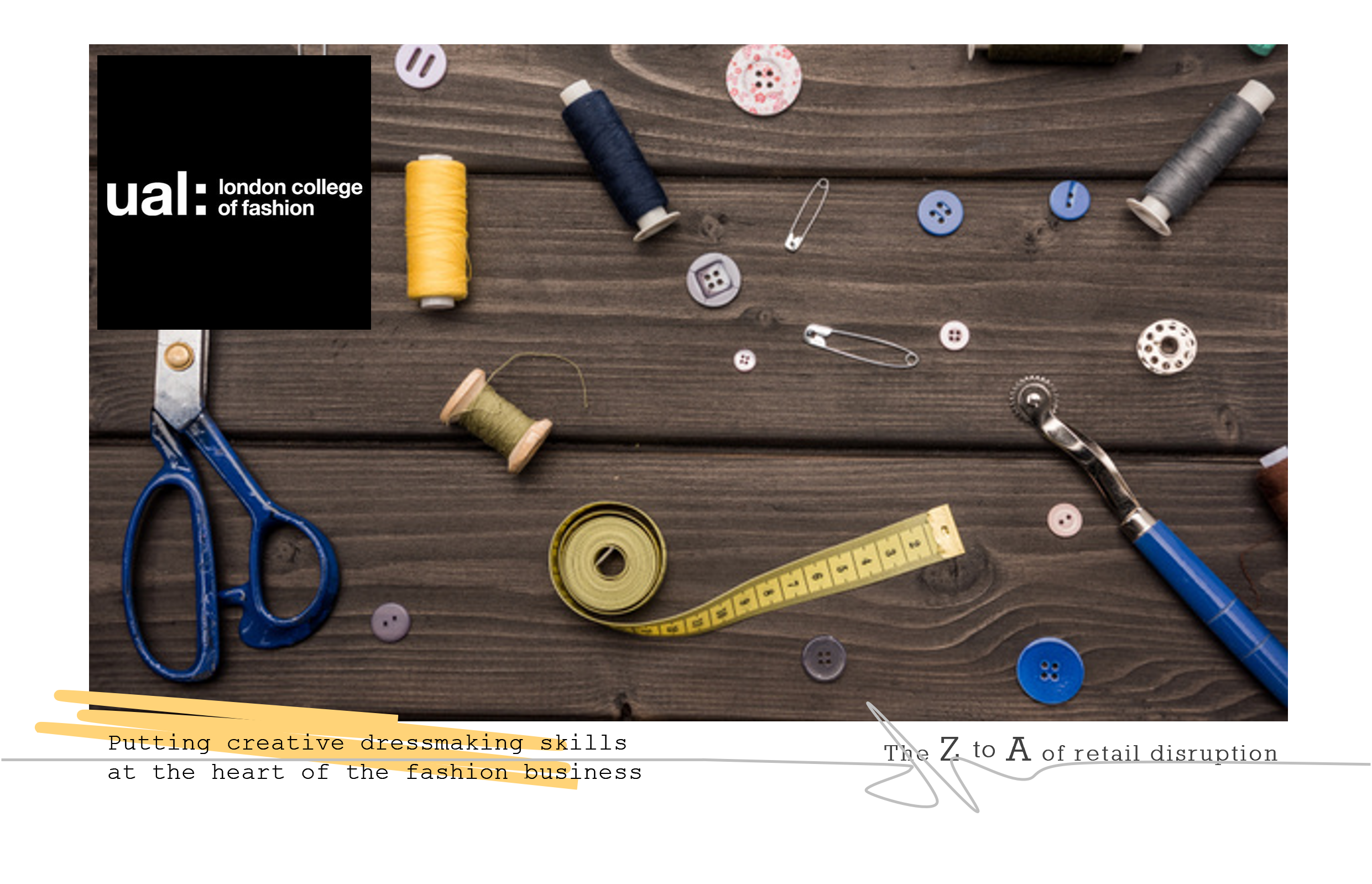I have recently met Asya Ter-Hovakimyan. She is a former student at the London College of Fashion, co-founder of fashion brand Omniss, and a determined and inspirational lady. She is participating in this year’s LCF collaborative challenge, and we can all learn a thing or two from her when it comes to understanding and re-appraising what designing fashion is all about.
Asya certainly had an amazing time when she was a student at LCF. Specifically she met Francisco Zhou, her Omniss co-founder there. But clearly for her there was always the need to learn more than it was possible to fit into the curriculum. Designing products and understanding fitting and pattern cutting are valuable skills for any designer, and a core of LCF, but it seems Asya wanted to create many more types of products than the timetable could accommodate.
She explained to current students how she constantly went out, hunting through second hand stores buying all manner of garments that appealed to her. Garments that would be the inspiration for her to evolve into pieces for her new collection, but had no idea how to construct, or design the patterns for them.
The two of them painstakingly unpicked every garment to reveal the secrets of the construction and the pattern shapes. From this investigation they were able to create their own personal pattern variations to create the collection look and feel that they wanted.
Asya was not the first, nor will she be the last, to learn in such an independent and investigative way, but it is so re-assuring to hear that a generation of new designers still appreciate the importance of understanding how clothing is constructed in order to make garments with genuine added-value in terms of fit, and comfort, shaping and styling.
This knowledge and practical dressmaking skill is the antidote to generic throwaway fashions, where profit is made through volume buying and sterile manufacturing. This is a return to the fashion of skilled creation, to the selling of distinctive designs that make the customer feel special and look amazing.
These are also the skills behind the flourishing upcycling and recycling markets. The fascination of garment design and construction now fuels thousands of cottage creators, dismantling and dissecting the ordinary, and fusing and adapting the remnants into unique and desirable new garments and products. The skills that have built brands like Elvis & Kresse and Titanic Denim, and which are filling the internet with exciting independent creators, satisfying the demand for clothing and products that are distinct and unique.
The London College of Fashion is amongst those amazing places across the country not only educating on the business of fashion, the new media marketing of brands & trends, but is also satisfying the huge curiosity into physical garment production. Helping their students on the way to becoming the new designers of tomorrow.
The LCF Collaborative Challenge is part of the curriculum of their BA fashion courses. The objective is for teams drawn from complementary disciplines, from fashion management to design and media, to transform one of a number of LCF alumni fashion brands into a physical customer proposition and retail space.
They will work as individuals and as a team on the brand creativity & communication, assortment curation, customer definition, physical shop location strategy, physical and digital shop design, and marketing & publicity. The projects culminate with a pop-up shop design concept bringing all of their work together as a single seamless physical entity.
